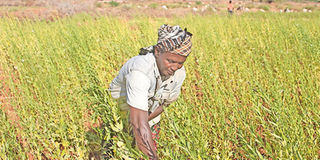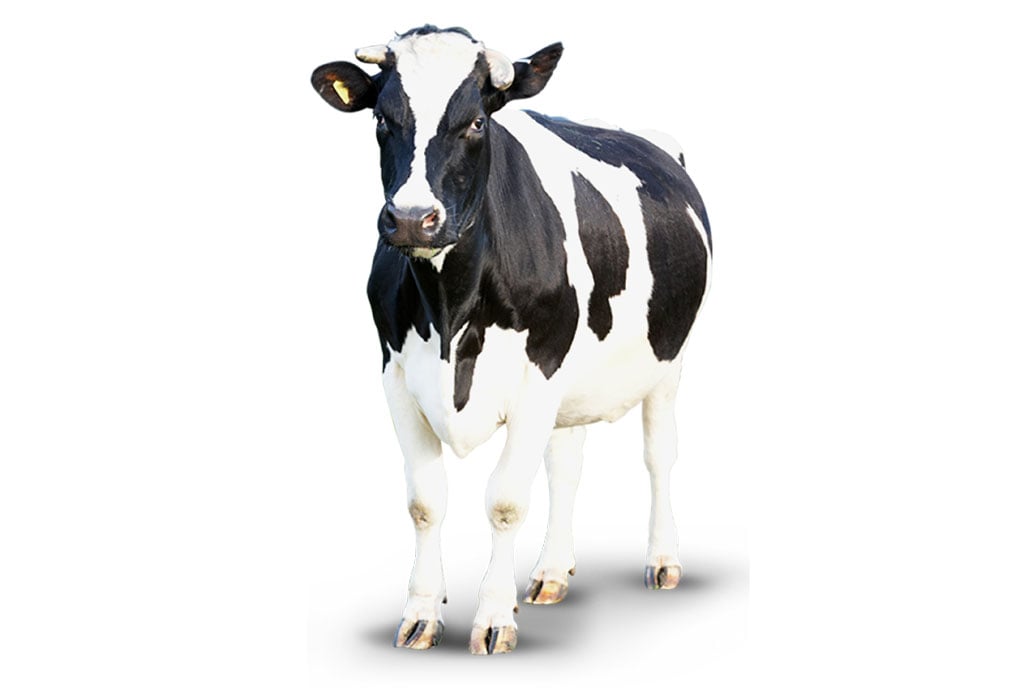ABi rejuvenates organic simsim farming

A farmer tends to her sesame in the garden. Sesame farming can be profitable when proper agronomy is followed. NMG Photo.
What you need to know:
- The plant takes three months to mature. It can be planted either on seedbed before it is transplanted or through broadcasting. The recommended spacing is 20cmx10cm between rows. Spacing is not only for aesthetic reasons but it helps in weeding and thinning, writes George Katongole.
- Patrick Ojok, who grows simsim on four acres is a lead farmer Jwinya village, Agonga Parish, Koch Goma, Nwoya District. In 2012, he used to grow simsim for family consumption. He is happy that through GADC he has expanded to four acres.
A Shs1.5b intervention in northern Uganda has given organic simsim farmers a new lease of life.
In 2012, most parts of northern Uganda were recovering from the tremor of the Joseph Kony insurgency and aBi Trust, a funding agency that supports market-driven enterprises using a value chain approach for specific commodity groups, partnered with Gulu Agricultural Development Company (GADC) to provide hope through increased simsim production.
This has allowed GADC to be able to sell 6,000 metric tonnes every season to markets in Germany and Japan. Charles Oboth, the managing director of GADC, says it was a successful intervention that has helped change attitudes towards farming while offering employment and a premium market.
ABi intervention
The entire project started in 2012 and ended in 2015 with the aim of increasing farmers’ income by 30 per cent by reaching at least 1,000 households. It was also aimed at increasing GADC revenue by 40 per cent as well as providing employment.
“All these objectives were achieved. The yield has been increased through a number of activities including offering the best agronomic practices, provision of oxen loans to increase acreage and training farmers in post-harvest handling,” says Oboth.
Organisation
GADC offers a reliable market to farmers through a controlled system. The managing director is at the top of the chain with a production manager who works with senior area coordinators, field officers, lead farmers, and the organic farmers.
According to Oboth, this enables effective information flow and monitoring of production.
At the time of the project intervention, GADC had less than 10 permanent workers yet today they employ 55 permanent workers who are involved in the buying chain and at the processing plant.
“We are not a monopoly in the market. As a company we do not like the competition but it is healthy for the farmers. We have created loyalty with them and we know we have an edge over our competitors,” says Oboth.
Agronomy
Key to achieving adequate production, GADC promotes good agronomic practices. Peter Maganda, an agronomist with GADC says, “Initially farmers used to broadcast seeds, which led to poor yields. We trained them to plant in lines to avoid overpopulation or under population to achieve the recommended yields.” This was done through demonstration gardens at village level.
According to Patrick Oyono, a field officer, the recommended practices summarised as the five fingers of production that include time of planting, spacing, thinning, weeding and integrated pest management. A site for growing organic simsim must not have any traces of synthetic fertilisers or chemical sprays and must have not been furrowed for the last three years.
It must not have been used to grow genetically modified crops too. Regular testing to comply with organic production is administered at the garden level by GADC field officers with other random tests by International Control Union.
After site selection, bush clearing, first and second ploughing is conducted. Planting is done after the first rains. The recommended spacing is 20cmx10cm between rows. Spacing is not only for aesthetic reasons but it helps in weeding and thinning.
Oyono says that three kilogrammes of simsim plus 9 kilogrammes of dust is enough to plant an acre. Thinning is selectively done 14 days after planting. Since burning is avoided, the thinned plants are used as mulch to suppress the weeds. Weeding is done only once as plant canopies also help.
Oyono says that integrated pest management in organic farming is administered very early in the morning to the leaves by applying wood ash at flowering and when plants start forming pods.
Farmers normally have pest cards which identify pests and the helpful predators.
Post-harvest handling
Proper practices can be undone at harvesting. Maganda says that caution is exercised at harvest to avoid contamination. He says that when the plants are ready, they shed off leaves and turn yellowish.
This normally happens after four months. They are harvested in bundles which are put on the rack depending on how many a farmer’s hands can hold.
“Previously, farmers were heaping the harvest on the ground but termites ate the pods and stems. The seeds would be contaminated with soil and leaf trash,” he says.
GADC promotes the use of racks. There are three types being promoted including; giraffe, cow and elephant, which depend on appearance.
Farmers are supplied with tarpaulins to ensure a good quality during the drying time. After proper sun drying, seeds are removed by shaking bundles instead of beating.
GADC discourages the use of machines for threshing to avoid oil and fuel spills contaminating the seeds.
After winnowing, individual farmers pack and take their bags to collection centres where they are labelled accordingly.
Reaping
Patrick Ojok, who grows simsim on four acres is a lead farmer Jwinya village, Agonga Parish, Koch Goma, Nwoya District. In 2012, he used to grow simsim for family consumption. He is happy that through GADC he has expanded to four acres.
He belongs to a group of 30 farmers at Jwinya who collect their produce at Evalyne Atto’s home, a buying agent. The distance between Jwinya and Gulu is about two hours but with GADC, farmers are not stressed with their produce.




